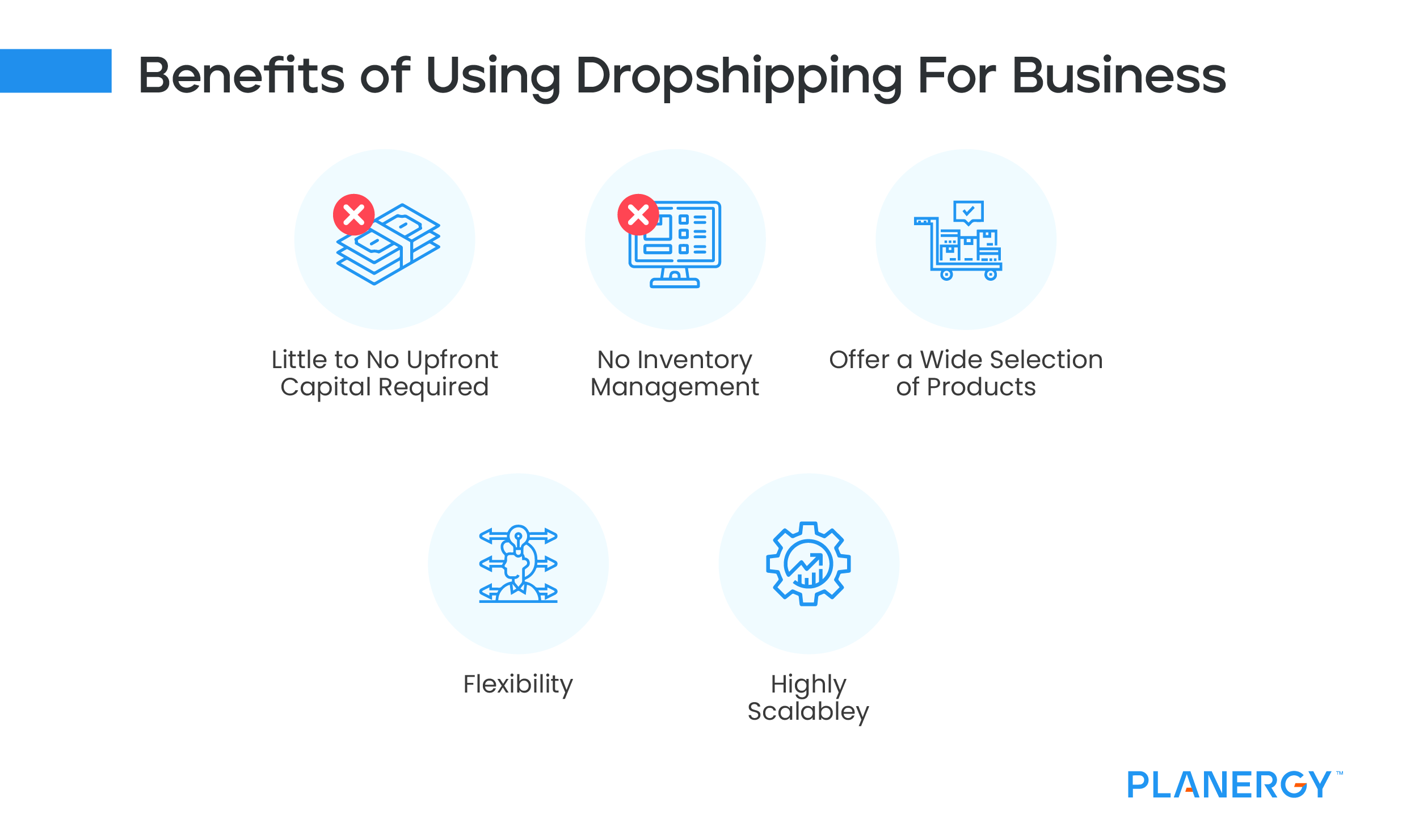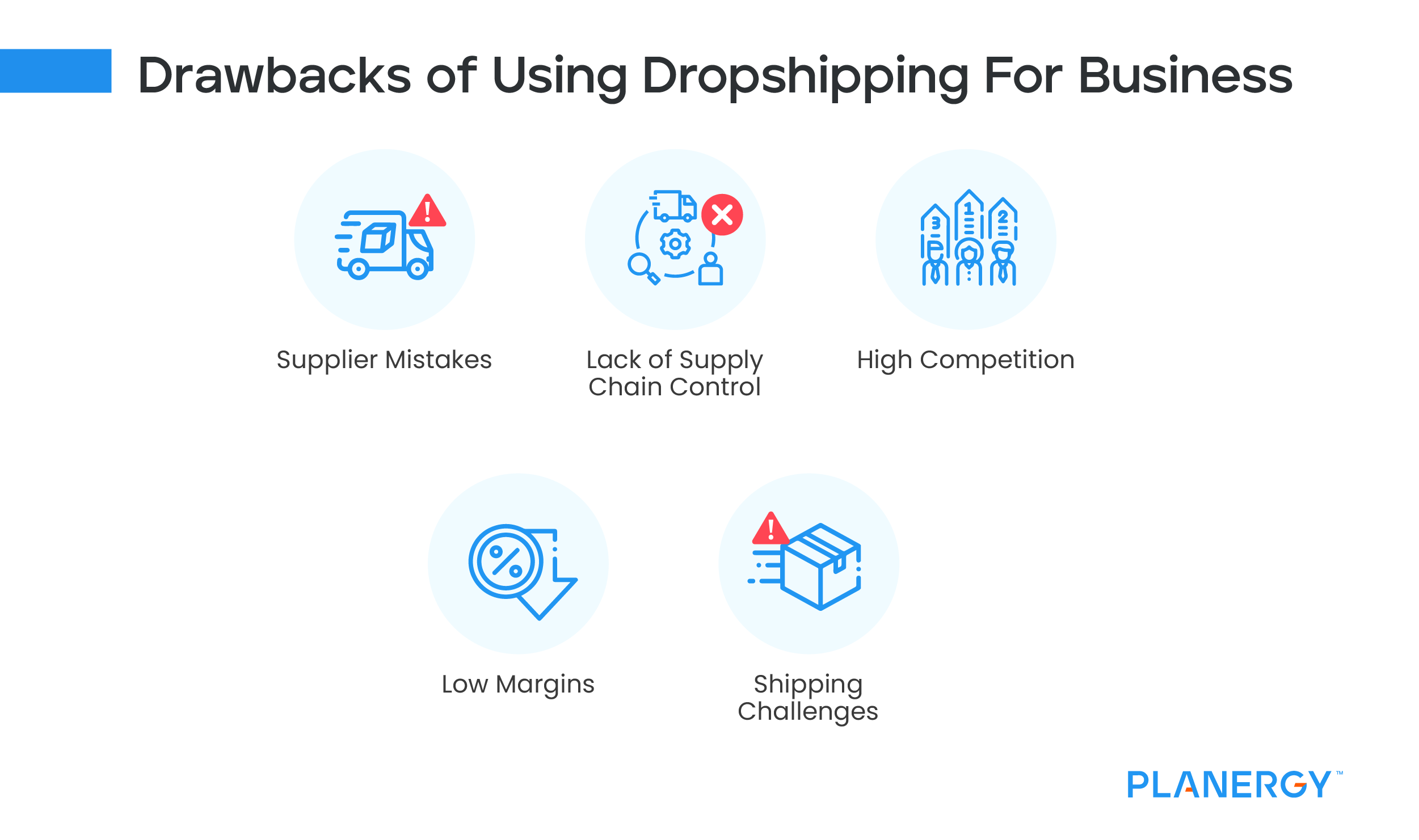What if you could start an eCommerce business or start an online store without…
- Designing and manufacturing products
- Renting or managing warehouse space to house inventory
- Stressing about order fulfillment
- Handling shipping customer orders
Whether you’re a small business owner looking to eliminate the hassle that accompanies a traditional retail business, looking to scale fulfillment in an existing company, interested in starting an online business, jumpstarting a side hustle, or starting your journey as an entrepreneur, dropshipping may be a great starting point.
In this article, we’ll look at the benefits of dropshipping, its business model, wholesalers and suppliers, and everything in between.
What Is Dropshipping?
In the world of eCommerce, dropshipping has become a major player. It’s one of the cheapest and easiest ways to start an online business, or aid in scaling or complementing the fulfillment method of an existing business.
The concept of dropshipping is simple – it’s the process of allowing you, the business owner (aka seller or retailer), to sell products and have your customer orders fulfilled directly by a third-party manufacturer or wholesaler.
The third-party can handle everything from manufacturing, production and storage to packaging and shipping items to customers.
Prior to the introduction of the dropshipping business model, there were two main online selling methods.
- Sellers purchased and stored bulk inventory, and fulfilled, packaged, and shipped orders.
- Sellers sold items designed and made-from–scratch, and fulfilled, packaged, and shipped orders.
With dropshipping, you never physically see or touch the product. Your responsibilities as a business owner are to maintain your storefront on an eCommerce platform (ie. Shopify, eBay, Amazon) or standalone website, grow your brand through marketing (ie. social media, SEO, online ads, etc.), provide customer support, and close sales.
The Main Players in Dropshipping
Not to overlook the customers, as they are the real champion of the dropshipping scheme. But, there are three major players that enable dropshipping – the manufacturer, you (business owner/seller/retailer), and the wholesaler.
The role of the manufacturer in the dropshipping business model includes creating products, whether they specialize in a specific product or create a variety of products; inventory management; and shipping items to customers on behalf of the retailer.
As the retailer, you select, market, and sell the manufacturer’s products via your online retail store. You’re also responsible for setting the prices, recording the purchase as revenue, and spearheading all things customer experience.
Acting as middlemen, dropshipping wholesalers are the glue that holds the entire process together.
Wholesalers purchase items in bulk from manufacturers and sell them to retailers at markup prices. They may also offer dropshipping services to retailers – shipping orders directly to the customer.
How Dropshipping Works?
Although it may vary, dropshipping typically works like this:
- You decide what you want to sell and populate your eCommerce store with those items.
- A customer visits your online store and places an order.
- You receive the order and notify the customer to confirm receipt of purchase.
- You forward the order to the dropshipping supplier.
- The supplier packages the item(s) and ships it.
- The customer receives their order.
- **Note: While the supply chain is not your responsibility, if your supplier fails in order fulfillment, you will likely be first in line to deal with customer complaints.
Benefits of a Dropshipping Business
According to Statista, the dropshipping market size is expected to reach over $476 billion (USD), globally, by 2026.
Considered a low-risk business model, dropshipping can be a profitable venture with patience and the willingness to invest time, effort, and money into your dropshipping store.
As you explore if the dropshipping model is right for you and your business goals, let’s first look at some of the notable benefits.
-
Little to No Upfront Capital Required
In comparison to traditional retail stores, dropshipping does not require a hefty financial investment, making it a cost–effective option to start an eCommerce store or use the business model to expand product offerings.
-
No Inventory Management
Dropshipping eliminates the obligations of obtaining, purchasing, and operating a warehouse space; order fulfillment; and inventory management – significantly reducing your overhead expenses.
-
Offer a Wide Selection of Products
Because you don’t have to pre–buy or house physical inventory, you have the freedom to offer customers a variety of products at no additional cost. Further, you can test new products with minimal financial risk.
-
Flexibility
Dropshipping enables you to conduct business, fulfill orders, and communicate with suppliers and customers from anywhere, as long as you have access to an internet connection and a reliable laptop or computer.
-
Highly Scalable
Growth is desirable in every business. With the dropshipping model, you can sell to the entire world as long as your supplier ships there. Also, the model easily adjusts to your business’ needs and growth goals.

Cons of Dropshipping
Nothing in life is perfect. Where there are pros, there are cons. Here are a few to consider.
-
Supplier Mistakes
We’re all human and humans are error-prone. Your suppliers are no exception, so be prepared to own those mistakes. After all, as far as your customers are concerned, you are the entire business.
-
Lack of Supply Chain Control
Because inventory is managed by a third-party, you are unable to inspect and ensure the product quality of the items sent to your customers. You have no control over the packaging design, nor do you have the ability to personalize the shipment (ie. add coupons, thank you notes, etc.), unless you negotiated a special deal with your supplier(s).
-
High Competition
While the low barrier to entry and little to no startup costs make dropshipping attractive, they’re also responsible for creating heavy competition. Remember, other stores are selling the same products from the same third-party suppliers. This means you have to be creative in your marketing in order to stand out.
-
Low Margins
As mentioned above, dropshipping is highly competitive. In order to win over customers, it’s common for retailers to feel pressured to sell their products at lower prices to maintain sales, resulting in small profit margins.
-
Shipping Challenges
Delays in shipping are common in dropshipping fulfillment, especially if you work with different suppliers and wholesalers or ship to countries outside of your home country. The key is to search for high-quality providers, which can be a challenge itself.

According to Statista, the dropshipping market size is expected to reach over $476 billion (USD), globally, by 2026.
What Is Niche Dropshipping and Why Choose Niche Products?
Niche dropshipping is simply choosing and selling a product(s) from a specific category, subcategory, or area of interest of a customer.
Depending on your overall business goals, interests, and target customer base, narrowing your niche as a retailer has the potential to drive high–quality visitors to your store, leading to a greater chance of converting sales.
As a quick example, let’s say Store 1 sells activewear for females and Store 2 sells yoga pants for pregnant women.
Store 1 may bring a larger audience to your store, but they will likely just browse to see what you offer. They are not looking for anything specific.
Store 2 will bring a smaller, more specific audience. However, the audience will be looking for a specific product, increasing the chance of converting site visitors into customers.
So, in essence, choosing a more narrow, strict niche results in:
- A clearly defined targeted audience
- An opportunity to increase conversions
- Less competition
- Easier marketing
- A more focused reach
Examples of Companies Using Dropshipping
The dropshipping model is not only for aspiring entrepreneurs or small business owners.
Many well-known eCommerce companies and online stores have taken advantage of the dropshipping strategy.
Some use the model to complement their current fulfillment process and scale their business, while others focus solely on using dropshipping as their main business model.
The four companies below are great examples of how different retailers have capitalized on dropshipping.
-
Nordstrom
Nordstrom is the leading fashion retailer with 300+ physical locations, in addition to several online channels. Regarding their business model, dropshipping is an important part of their business, according to a 2021 earnings call transcript.
Dropshipping has enabled the expansion of Nordstrom’s product catalog and increased sales growth in the eCommerce space, without an increase in inventory investment.
-
Foot Locker
Synonymous with footwear and athletic apparel, Foot Locker operates more than 2800 stores, globally. The majority of their sales consist of sneakers, Nike to be specific (70% of their products come from Nike),which led to an extensive dropshipping partnership with the popular shoe brand.
This allows Foot Locker to add more products to its website and meet the needs and demand of their customers, while eliminating the need to store extra inventory.
-
Zola
Founded in 2013, the innovative wedding registry used dropshipping right out of the gate, avoiding the headache of housing inventory – shipping items directly to their customers from the manufacturer.
As of 2020, Zola offered over 100k unique gifts and products to couples, and had a valuation of $650 million.
-
Gymshark
Launched in 2012, Gymshark started out dropshipping supplements. As the supplement business grew, the team reinvested the money into the business to purchase a sewing machine and screen printer; they decided to add fitness apparel to their offerings.
Sewing each garment by hand, the team soon switched to using in-house fulfillment and selling products from an authorized manufacturer.
After developing their luxe fitted tracksuit, which was a major hit, they poured all of their money into buying the inventory for it. This resulted in a growth explosion (approx. $450 million in revenue in 2021).
Consideration for Choosing a Dropshipping Partner
Finding and choosing the right dropshipping companies requires just as much research as any other aspect of building a business.
To start, there are marketplace directories like Spocket and Wholesale Central to help you find suppliers and source products.
Also, recommendations from other store owners and colleagues can go a long way. And don’t forget review sites, forums, and sites like Youtube.
As you zero in on potential partners, be sure to note their company reviews, length of time in business, customer reviews, product availability, integration and customization options, shipping locations and any associated shipping costs, and customer service.
Lastly, order test products from your top two or three choices; it’s important for you to know every aspect of the experience you (and your customers) will have using them.
Dropshipping Wholesalers/Suppliers
A successful dropshipping operation starts with partnering with wholesalers and suppliers that meet your specific needs.
Here’s a list of reputable vendors to consider.
- AliExpress Dropshipping
- SaleHoo
- Doba
- Amazon
- Modalyst
- Alibaba
- Megagoods
- Spocket
- Wholesale2B
- Inventory Source
Is an Ecommerce Dropshipping Business in Your Future?
Yes, dropshipping is a relatively low-threshold business model, but it doesn’t come without some stress and challenges. And, it’s not “easy money”.
From determining what you want to sell and researching competitors to finding the “right” supplier partner and marketing your business – it’s mandatory that you do your due diligence before making any final decisions and remain persistent in setting yourself apart from your competitors.




